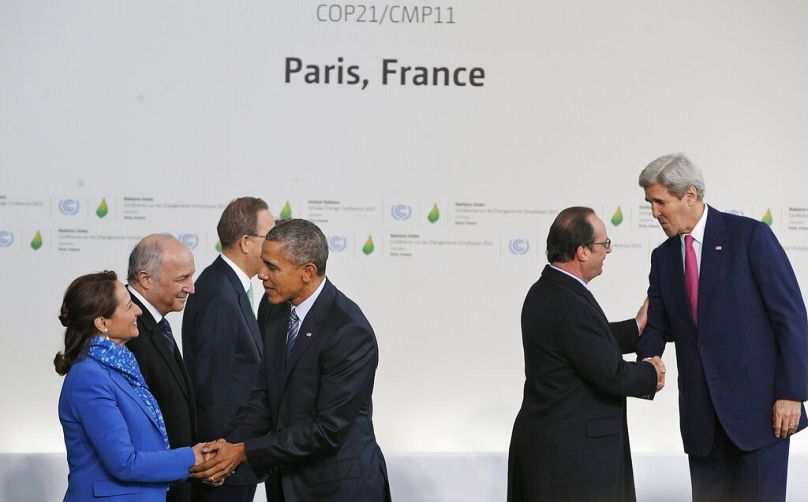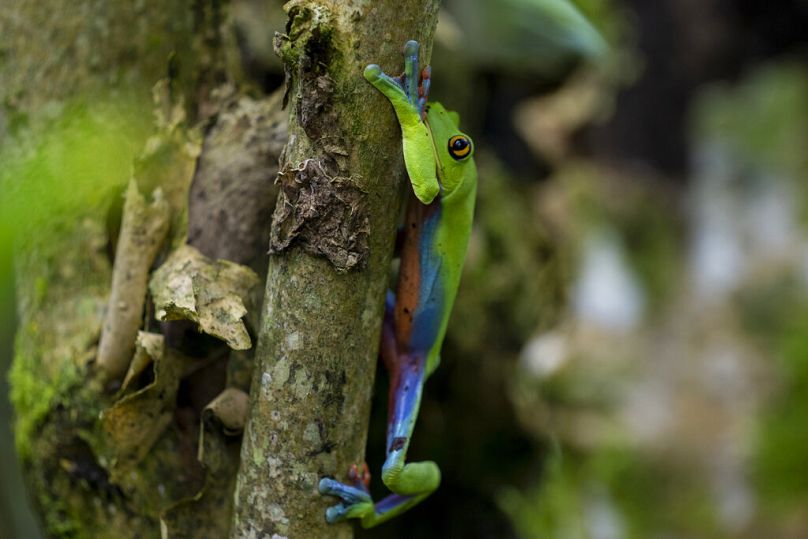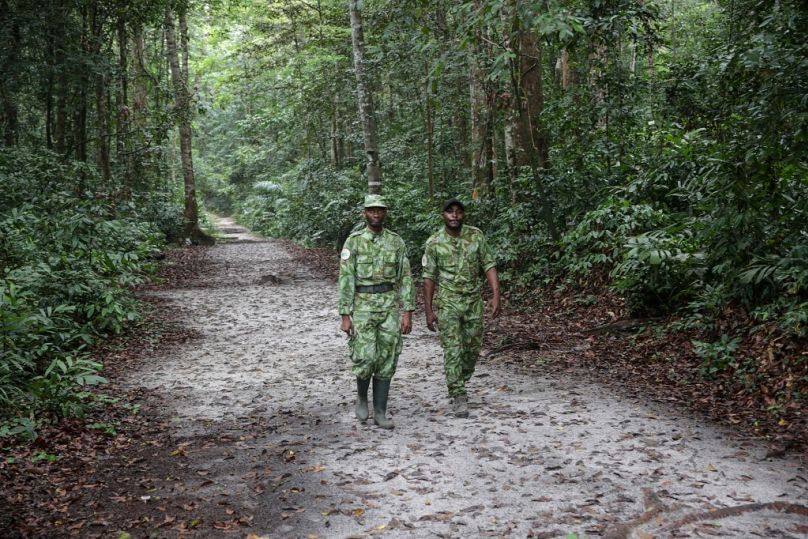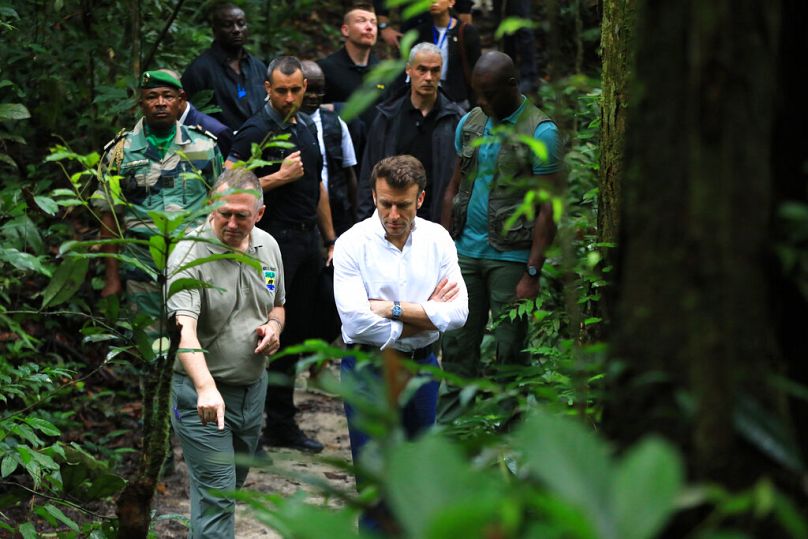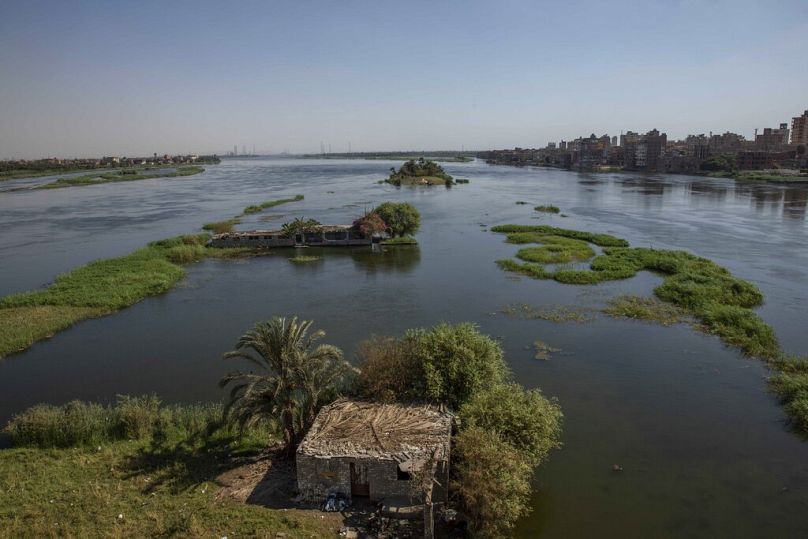As COP28 concludes, the question remains — who is going to provide the leadership we so desperately need, Prof Lee White CBE writes.
As we depart COP28 in the desert, where technology creates the water that maintains world-class golf courses and lush gardens, I feel some family pride.
My father-in-law, Charles Abernethy, was the engineer who put the first water pipe into Dubai in the early 1960s.
At that time, all drinking water arrived on the donkey's backs, from salty wells along the coastal flats. A thin layer of fresh water, which floats over salt water, was skilfully harvested.
These wells are surely pure salt water today because of sea level rise, which is impacting more and more farmland and drinking water in low-lying coastal areas around the globe.
Fortunately for the people of Dubai, desalination technology has solved this problem.
In Dubai, we see what visionary leadership, innovation, technology, and resources, can achieve. Humans can change a desert into fertile land and create a vast oasis where there was just sand.
In the same way, human beings can surely fight climate change. We just need visionary leadership, innovation, technology, and resources.
Matters of life and death
I sat in a small room in Copenhagen for 27 hours as Gabonese President Ali Bongo Ondimba’s “plus 1” whilst 20 heads of state, including Barack Obama, Lula da Silva, Gordon Brown, Nicolas Sarkozy, Angela Merkel and Meles Zenawi tried to craft the Copenhagen Agreement.
I was in Paris with the Gabonese foreign minister, the late Emmanuel Issoze Ngondet, who co-chaired the finance negotiations in the long sleepless hours before Laurent Fabius’ Paris Agreement was born.
And in Glasgow, in my capacity of environment minister of Gabon, as chair of the African Group of Negotiators, I spoke on behalf of Africa, defending the red lines regarding action to address “adaptation” and “Loss and Damage”, that quite simply are matters of life and death for many on the continent.
Sadly, all those hours of negotiating and landmark agreements didn’t seem to have taken us very far.
The UN Environment Programme now tells us that if we continue as we are going, we are on track to reduce emissions by 2% by 2030 — not the 43% threshold we need to achieve to have any hope of meeting Alok Sharma’s rallying call to "keep 1.5 alive".
We are, in fact, hurtling towards 3°C, which means Dubai will be 8 degrees warmer and sea level a metre higher by the end of the century — forcing UAE to move all their desalinisation and nuclear power plants.
The global leadership to fight climate change just is not there — yet.
We know exactly what we need to do
What is frustrating is that we know what to do and we have most of the technology to do it.
The first key action is to stop destroying the natural systems that buffer the impacts of climate change by absorbing CO2. If we reduce deforestation, particularly in the tropics and then stabilise and restore forests, we will have solved 20% of the problem.
Then we need to shift the world onto renewable energy and electric vehicles, and design low-carbon buildings and cities.
Developing nations showed leadership almost 20 years ago when Costa Rica and Papua New Guinea proposed a mechanism to the United Nations Framework Convention on Climate Change (UNFCCC) to reduce carbon emissions from deforestation. Gabon was the third country to sign up.
At Copenhagen, in 2009, a formal COP decision validated REDD+ as an agreed UNFCCC mechanism. At the Paris COP in 2015, REDD+ was the subject of a dedicated article, known as “Article 5”, which formalised the principle that developing forest nations who reduced emissions from their forests would be paid for validated results.
REDD+ is an acronym for Reducing Emissions from Deforestation and Degradation of Forests and — all encompassed in the “+” — preserving and enhancing forest carbon stocks through conservation, restoration, reforestation and afforestation.
In other words, stop cutting down and degrading forests, restore and plant more forests, and you will be paid for each ton of carbon, subject to a plethora of rules and a strict review of your data by independent UNFCCC experts.
The case of Gabon as a blueprint
Back in 2005, there was almost no deforestation in the Congo Basin. We were net absorbing about a billion tonnes of CO2 annually, over 2% of global emissions.
In Gabon, we put in place a strategy to preserve and sustainably harvest forests. The country was 88% covered in biodiverse tropical rainforests at the time.
Traditionally, the forests provided for the Gabonese peoples’ home, larder, pharmacy and temple. As a developing nation, Gabon had to find a model to grow the economy with the forest.
Most countries on Earth have cut down their forests as they developed, slipping inevitably down a “deforestation curve” as development accelerates.
That model is basically to exploit the forests sustainably by selectively cutting 1-2 trees per hectare every 25 years and investing in timber processing infrastructure to ensure that a maximum of the value added resulting from processing stays in the country.
Gabon exported its first wood to Hamburg in Germany in 1889 in the form of logs of Okoumé, known as “Gaboon” by the Germans.
Today we know that when you export a log you are retaining just 8% of the value and creating just 8% of the jobs in-country.
I ran a model estimating the economic loss to the economy of exporting logs from Gabon to Europe and elsewhere, post-independence in 1960. I used a 10% compound interest rate.
The number my model spat out was $440 billion (€407.7bn) of lost revenues.
Gabon would be a very different place if it had had an additional $440 billion injected into its economy since independence.
However, by banning log export in 2009 and finding investors willing to take a chance on local transformation, Gabon has been able to increase forest sector revenues and jobs by 400% in 10 years.
Everything can be done with the environment in mind
Forestry is selective, cutting 1-2 trees per hectare every 25 years. At the end of a 25-year rotation, there is more carbon stored in the forest than there would have been if the forest had been left unlogged because opening the canopy allows light to penetrate and results in a growth spurt.
Forestry concessions are managed to produce a sustainable offtake of timber and at the same time to increase the average carbon content of the forests.
Logged forests in Gabon have an average above-ground carbon content of 213 tonnes of carbon (779 tonnes of CO2) compared to 187 in undisturbed forests, such as those in Gabon’s 13 national parks.
Processing the timber in-country has seen Gabon’s timber economy pass from $250m (€231.7m) per annum 10 years ago to $1bn (€926.6m) in 2022.
Through a combination of protected areas, which today cover 25% of Gabon’s land, sustainably managed forests, which cover a further 60% and careful land-use planning, Gabon was able to reduce its CO2 emissions between 2010-2018 by 90 million tonnes compared to a 10-year baseline between 2000-2009.
Under my leadership as minister, Gabon formally registered these reduced emissions with the UNFCCC as REDD+ results.
Final approval was given in November of last year during COP27, and to this day, Gabon is the only African country with validated REDD+ results.
Its high forest cover and sound forest management mean that Gabon’s CO2 absorption exceeds its total emissions across all sectors of the economy by just over 100 million tonnes per annum — meaning that by reducing its emissions, Gabon increased the absolute amount of CO2 it absorbs from the atmosphere.
The formula is simple
Gabon is a litmus test for the UNFCCC forest preservation policies — a model that other nations might aspire to replicate.
One country where immediate action is needed is the Democratic Republic of Congo (DRC). Its forests are six times the surface area of Gabon’s — 60% of the Congo Basin. They represent a vast stock of carbon and biodiversity.
Their forests have a cooling effect that effectively doubles the climate value of the carbon they lock up, and they generate the local rainfall that fuels DRC’s agriculture.
They are also the source of water vapour that "flows" into atmospheric rivers, carrying humid air as far as the Ethiopian Highlands, and generating the rain that is the source of the Blue Nile and in turn, irrigates Egypt.
Without these ecological services, the African continent will fail quickly and there will be hundreds of millions of climate refugees with dramatic global implications in terms of economies, human suffering and peace and security — the DRC is quietly yet quite literally the heart of Africa, pumping water, the life-blood of the continent, as far as the Mediterranean.
The DRC could become a major contributor in our fight against climate change, given their vast forests with huge capacity to absorb CO2; but to do so will need help from international partners.
The formula is simple: we need investment in modern tropical agriculture, to stop the carbon emissions and restore the ecosystem services the forests should be providing by removing CO2 from the atmosphere.
We need to make DRC’s forests more valuable alive than dead, through a combination of a Gabon-type transition to sustainable forestry and local timber processing, along with real, dependable payments for quality carbon and biodiversity services.
500m tonnes of reduced CO2 emissions at $100/tonne is $50bn.
Does the world have the visionary leadership, innovation, technology and, of course, the resources to invest in climate-resilient economies? This would not only provide environmental dividends, but it would naturally stabilise a volatile DRC, allowing it to become the success story we need it to be.
As COP28 concludes, the question remains — who is going to provide the leadership we so desperately need?
Prof Lee White CBE is the former Minister of Forestry and Climate of the Gabonese Republic.
At Euronews, we believe all views matter. Contact us at view@euronews.com to send pitches or submissions and be part of the conversation.












